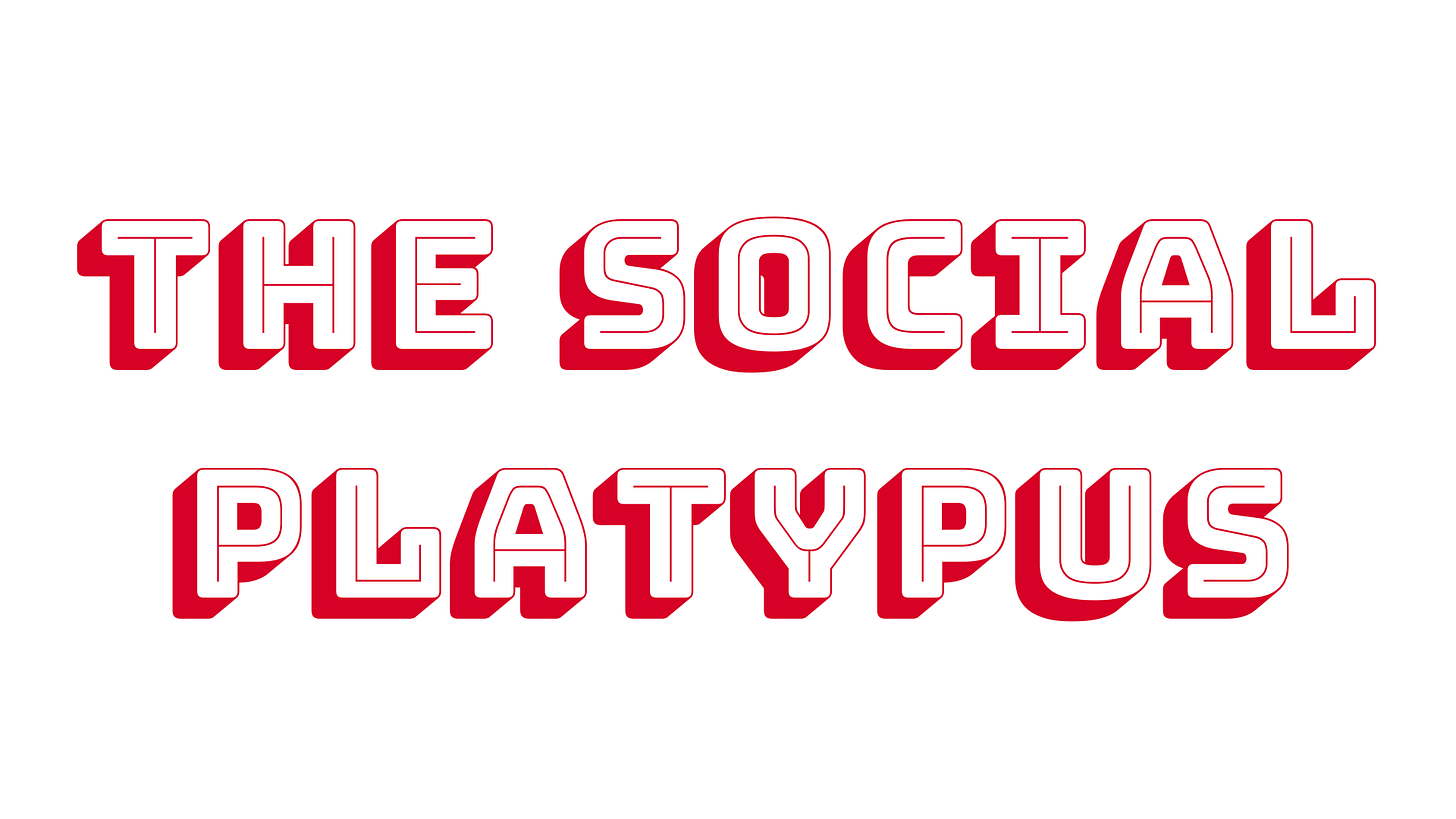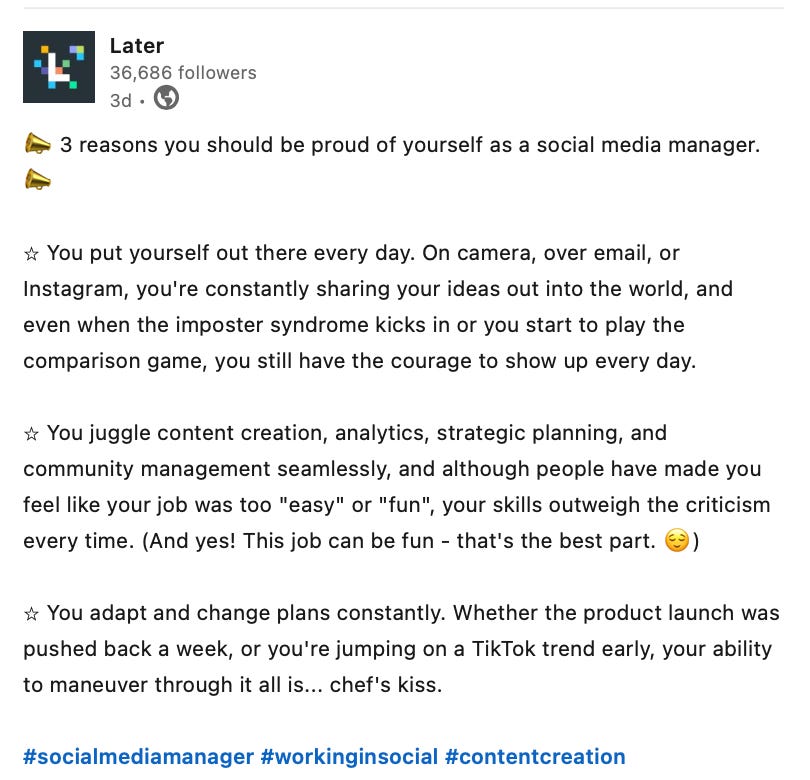I would love your feedback! In last week’s newsletter, I shared my thoughts (and fears) about showing up on video. I’d love to hear from you, about whether you have the same challenges around being vulnerable on video. If you have a few seconds, feel free to fill out my completely informal LinkedIn poll. Vote now!
In today’s newsletter:
What the Tok is Happening?
Twitter Undoes a Legacy (Checkmark)
Some Words of Encouragement for SMMs
WHAT THE TOK?
For the second time since it launched globally in August 2018, social media short-form video app TikTok is facing the threat of ban in the United States. First under former President Trump, and now, under President Biden.
Last week, CEO Shou Zi Chew appeared in front of a bipartisan committee in the U.S. Congress to defend his app against allegations of spying by the Chinese government. It did not go well.
If the app is banned in the U.S., it could lead to bans in other countries. It may also make other apps more vulnerable to banning. So whether you love or hate TikTok, whatever happens in this case could set a precedent.
1/3 The Hearing
If you didn’t get a chance to watch the hearing last week, this one-minute recap from the Washington Post sums things up perfectly.
Essentially, it was five hours of lawmakers accusing the CEO of using TikTok to steal the personal data of Americans (something that has not been proven), along with head-scratching questions such as whether TikTok accesses your home WiFi (if you want the Internet, yes), and mispronunciations, like TickTack.
In a rare rebuttal, when the TikTok CEO was asked about use of user data, he said: "With all due respect, American companies don't have a great track record with data … Just look at Facebook and Cambridge Analytica." (Meta settled the Cambridge Analytica scandal case last December for $725 million).
2/3 Creators Rise Up
There are 150 million TikTok users in the U.S. (and 7,000 TikTok employees), least according to this video posted by the TikTok CEO. And many of these users are very angry. Why? Because for some TikTok users, this is their livelihood. For others, it’s where their community is. And many marginalized groups are concerned about being silenced.
Based on what I’m seeing on TikTok, the main option being discussed by creators right now is deleting Facebook and Instagram — even temporarily — to make the stock tank. (Some are blaming Meta for this potential ban, pointing to a 2022 Washington Post story suggesting Facebook paid a GOP firm to malign TikTok). Others have suggested a potential class-action lawsuit. Meanwhile, some creators are promoting the other apps they are on, and talking about using VPN access to get around a potential ban.
3/3 What Happens Next?
Basically, this has become a game of chicken. The Biden Administration wants TikTok to sell the app. But Beijing said on Thursday it would “firmly oppose” a sale. And while the courts blocked Trump from banning the app last time, that’s unlikely this time. There is currently a bipartisan Senate bill — the RESTRICT Act — that, if it becomes law, would allow the Commerce Department to ban foreign technology companies.
So, why should we all care about a potential TikTok ban in the U.S.?
Well, first of all, governments in Canada, the U.K., Europe and elsewhere have already banned the app on government-issued devices. Could those same countries also now consider a total ban? Who knows. But it does open up that possibility.
And it also looks banning the TikTok app may be the tip of the iceberg. According to Le Monde, France recently announced it would ban a variety of “recreational applications” from civil servants’ phones — including Twitter and Netflix — saying these apps present “risks in terms of cybersecurity and data protection of public officials and the administration.”
It’s hard to say what will happen. But never before has the social media world been so unstable. If you haven’t done so already, now is the time to risk proof your social media strategy!
🥨 SOCIAL SNACK 🥨
Twitter Undoes a Legacy (Checkmark)
As of April 1st, Twitter accounts with a (free) verified legacy checkmark will soon see that disappear. “On April 1st, we will begin winding down our legacy verified program and removing legacy verified checkmarks,” the Twitter Verified account tweeted. The only way to get a checkmark moving forward: Signing up for a Twitter Blue subscription. (Here’s everything you get for $84 a year). But while you do get a (paid-for) checkmark, it seems that some users are embarrassed to have it on their account. This Mashable article suggest there may soon be an option to hide the blue checkmark on your profile.
ICYMI
Instagram has started putting ads in search results [The Verge]
Meta’s shelving the last elements of its social audio push [Social Media Today]
Snapchat is introducing AR enterprise services [Snapchat Blog]
Pinterest partners with Dotdash Meredith on exclusive video content deal [Pinterest Blog]
LinkedIn adding feature that will allow you to share posts with your network [Jeff Cheng, Product at LinkedIn]






